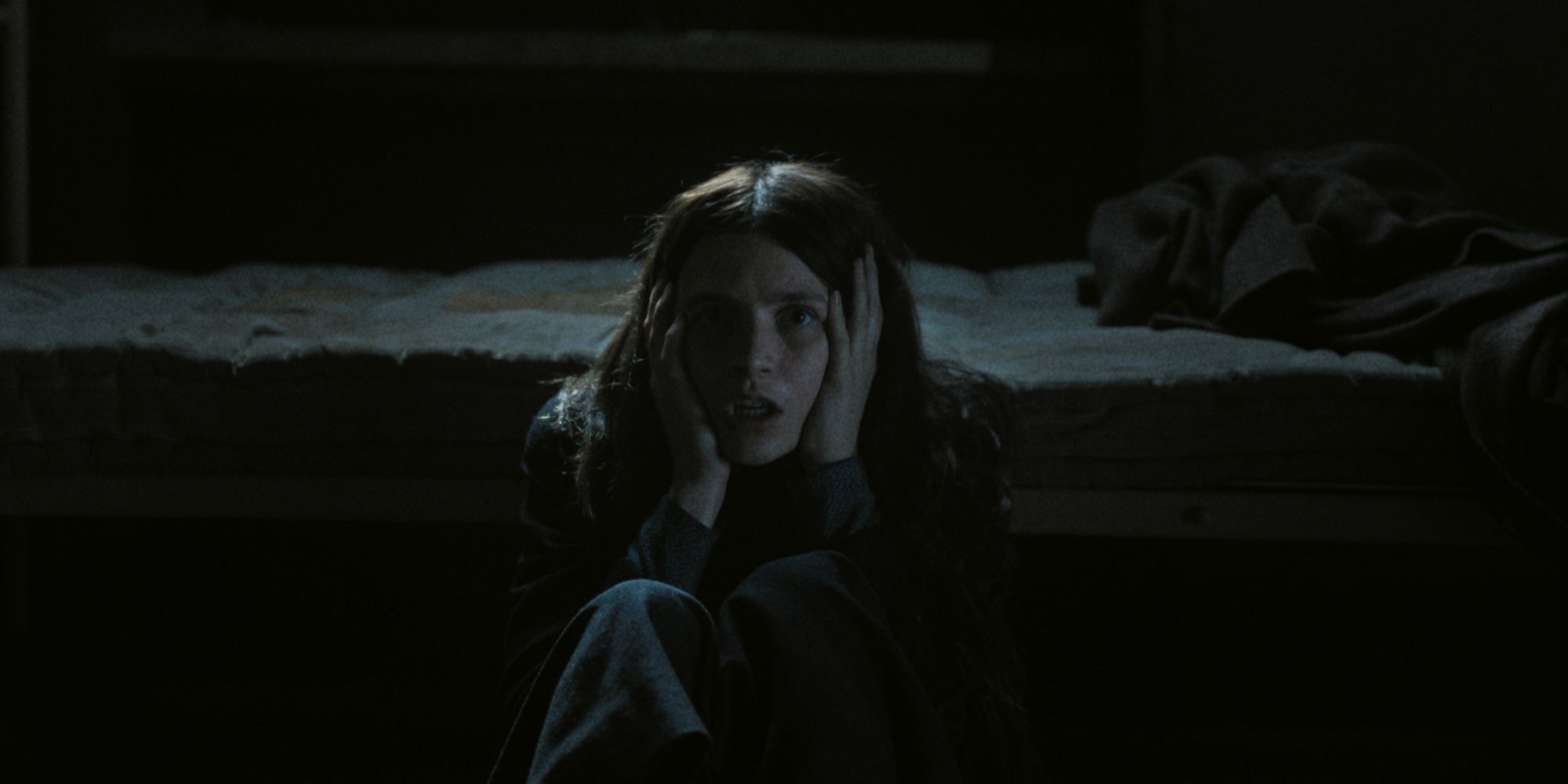
Director: Arkasha Stevenson
Stars: Nell Tiger Free, Ralph Ineson, Sônia Braga
The appearance of The First Omen within a matter of weeks of Michael Mohan’s shockingly similar – yet also radically different – Immaculate will be brooded over ad nauseum, one suspects, the way such acts of cinematic providence often are. But when the dust settles, Arkasha Stevenson’s unassuming prequel to a long-dead and longer-forgotten horror franchise will be the picture that’s remembered. It might not have Sydney Sweeney screaming into camera for its delirious denouement, but it is of far more sinister and brooding construction, and may just stand as the best religious horror flick to emerge since William Peter Blatty’s compromised-yet-brilliant The Exorcist III three decades ago. Not only that, but it has birthed a new Mother Superior for the genre in Nell Tiger Free.
Stevenson wasn’t one to be readily taken for granted (as anyone who has caught her raucously rancid efforts for TV shows Legion and Brand New Cherry Flavour might be aware) but you’d be forgiven for thinking that the prospects for The First Omen weren’t great. Horror fans have long been burned by lifeless, heartless IP extensions, and have grown especially wary of belated ‘prequels’ trying to explain away the things best left half-buried in the dark. And in truth what’s been crafted here isn’t a million miles away from a number of other religious horrors, Michael Mohan’s recent hit included. But it’s the manner in which Stevenson goes at it that impresses. The sharpness of her teeth. The hunger of her bite.
Let’s get the plot paragraph out of the way. 1971. Orphan Margaret (Tiger Free) is an American novice raised in the church who has journeyed to Rome to take her vows, under the tutelage of her trusted Cardinal Lawrence (a mercifully brief Bill Nighy). Acclimating to the convent, Margaret finds herself drawn to problem-child Carlita (Nicole Sorace); a scribbler of tormented drawings kept separate from the other girls and often punished with time-outs in The Bad Room. Other distractions tear at Margaret. Not least her vivacious roommate Luz (María Caballero) who’s all-too-keen to enjoy the pleasures of life before donning a wimple for the remainder of her years. Caught between her own apparent history of mental illness and the whispered conspiracies of a priest named Father Brennan (Ralph Ineson), Margaret descends into paranoia that something deeply unholy is happening with Carlita is at it’s centre.
So far so generic – especially with all the lore of The Omen looming in the background – but Stevenson goes at the material with the nous and devotion of one well-versed not just in the practices of ’70s horror, but the tone. Period detail is all present and correct (save for a few annoyingly inaccurate needle-drops in da club), but it’s the mood Stevenson nails so well. The First Omen takes its time. It asks you to invest in people and situations. It knows the power of a tease. Also the loom of religious iconography. The dark shadows of history. The Exorcist is often recalled in this sensibility, but the nods run deeper, further.
Somehow The First Omen feels redolent of both Suspirias. Argento is there in the use of murals and secret rooms to conjure fairy tale discoveries, in the Grand Guignol moments and sporadic mad crescendos. Guadagnino is summoned in the dourness of Stevenson’s Europe, in the backdrop of political upheaval, and in the batshit basement shenanigans of the film’s finale. Along the way we even get a full-bore homage to Andrzej Żuławski’s Possession; something Tiger Free goes at with every bit the commitment previously proffered by Isabelle Adjani. Stevenson’s icons are giants and she gamely steps forward to join them. And this is her debut.

What feels key to The First Omen‘s individuality within a crowded subgenre is the presence of a woman at the helm. Where Mohan channeled the male-gaze of so much ’70s nunsploitation, Stevenson approaches Margaret’s conundrum from a place of bodily empathy and appreciation, channeling the mess, muss and fear of childbirth in a relatively early sequence that goes hard with a confidence redolent of Ridley Scott. Gallingly explicit for a pop horror film (even if only in flashes) its a sequence defined by its witness; our breathlessly terrified Margaret who is experiencing – unwittingly – one of her own first omens. Again it’s worth underscoring how commanding Tiger Free is here. The film feels dotted with Easter Eggs to David Lynch’s Mulholland Drive (from Margaret’s first words arriving in Rome to the many utterances of “Silencio”), but Tiger Free conjures no one so much as Naomi Watts at her most unravelled in that film. She shivers with the same intensity.
Sisterhood comes to take on multiple meanings in The First Omen, and so continues the greater matrix of feminine concerns written into the film’s very core. From the strictures of a patriarchal institution that channels the direction of these women’s lives to the same horrors of consent (or the lack thereof) that stoked the fires of Immaculate‘s inferno. When Luz takes her oaths, Stevenson shows us a woman supplicating into the role of a dutiful wife. Teachers and mothers are other recurrent roles adopted (either impulsively or through gritted teeth). Whether the nuns are with one another or clashing as adversaries, there’s a tension in The First Omen that’s to do with curtailed freedoms. A persistent undercurrent that women in the church have specific, narrow roles to fulfil. The importance of a male heir in the church’s diabolical plot to spawn an antichrist only serves to underscore this further. One nun’s response to her mistreatment, meanwhile, came to feel like a performative political act. Thich Quang Duc came to mind.
There are frustrating niggles to navigate. Mark Korven’s score – redolent of his work on The Witch – occasionally bludgeons where restraint might have proven more immersive. Some of the exposition, too, is a little lumpen and heavy (Ineson is handed much of this, and goes at it with craggy aplomb), and there’s the occasional tip to modern horror expectations that feel like the machinations of a lesser movie (though Stevenson clearly resists these as much as she can). Credit where its due, the finale has to navigate two masters – a satisfying end to this tale and the weight of inevitable franchise responsibilities – but generally manages to placate both needs, even rolling out some string for a new branch of the series to follow should it prove successful.
Truth be told, I’ve never been much taken with The Omen series, even its supposedly-seminal 1976 first feature. That’s all changed now, however, and I hope this new venture does get a chance to show its teeth again. Stevenson’s work here is huge, and much as I’ve been impressed by it, I’d like to see this series handed off, Alien-style, to another up and coming horror visionary for any subsequent outings. If only so as to see Stevenson spread her wings elsewhere. The score below is one from the head – measured, admitting weaknesses here and there – but my heart tells me this one’s likely to become one of my favourites of the year, and a not-so-modest milestone in the evolution of this decade’s horror cinema.
Frankly, I can’t wait to see it again.


love this! & loved the way its inspirations are apparent but so well-executed that it never feels like pastiche
Yeah, it gathers these things in but then it’s still its own thing. Was impressed!